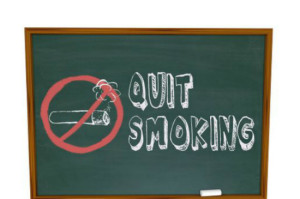Everyone struggles with hitting a plateau at some point in the weight loss journey—that dreaded point where the number on the scale stops dropping, despite you still following the program.
Above all, keep your goals at the forefront of your mind, and remember how good you feel when you lose weight, eat right, and exercise to motivate yourself to keep pushing forward, even when you feel frustrated. Also remember that plateaus are temporary, and that there may be something you can do.

Be sure you are actually in a plateau. If you have incorporated exercise into your regimen, you may have built up muscle mass, which is heavier than fat mass. Your waist or thighs may still have gotten smaller, even if the number on the scale stays the same. Take an objective look in the mirror, be aware of how you feel and how your clothes fit. Your overall situation may be improving, independent of the scale. Over time, and until you hit a real plateau, the numbers will reflect the improvement.
If you have hit an actual plateau, take inventory of your habits and what and how much you’re really eating throughout the day—keeping track with the Trim Down Club Diet Journal can really help here, especially if you are aware and honest; keep in mind that no one will see it but you, so don’t be shy!
Perhaps re-measure your portion sizes, as it is all too easy to let them creep up in size once we get comfortable with ‘eyeballing’. On the same lines, take inventory of your salt/sodium intake, as too much can result in water retention that adds weight.
You’ll also want to consider how much you’re really exercising: how long and how intensely each day and how many times each week—and compare it to what you did to lose weight before. Again, it is too easy to start tapering off and skipping workouts, which can lead to backsliding.
If you find that the backsliding represents aspects of your eating plan that are just not working for you, now is the time to go back to the drawing board and revamp your plan. That’s one of the reasons you joined a flexible eating program—so you can do just that with ease and options.
Be sure you’re getting enough sleep. Research has shown that getting to bed too late or skimping on total hours can actually slow down your metabolism. In some cases, it can also lead to overeating, especially of dense ‘fattening’ foods.
If you are sleeping less or poorly due to stress, finding a way to manage it is advantageous in two ways—both in enabling sleep and reducing your levels of cortisol, a hormone associated with persistent belly fat.
Be sure you’re drinking enough water every day—6-10 cups (8 fluid ounces or 240 ml each) or more, if it is hot outside. When your muscles are not properly hydrated, your metabolism slows down.
Consider adding or swapping in some foods that can spark a slowed metabolism and get fat-burning on track. These include:
- Green tea
- Warming spices such as cinnamon, chili peppers, and turmeric
- Certain nuts, such as almonds, walnuts, hazelnuts, and macadamia nuts
- Olive oil and oils from recommended nuts
- Fermented foods, including vegetables, organic soy, and dairy
- Root vegetables, such as onion, garlic, leek, chicory, sunchoke
- Cruciferous vegetables, such as Brussels sprouts, cabbage, broccoli
- Foods high in omega-3 fats, such as fatty fish, kale, almonds
- Berries, particularly blueberries and raspberries
- Brown seaweed, such as wakame
If you have or suspect you have a thyroid condition, see your health care provider about adjusting or starting medication. If you are taking thyroid medication, be sure you are not eating high amounts of foods that may interfere with its effectiveness, such as cruciferous vegetables or soy.
If you find you’re doing ‘everything right’ and still plateauing, adjusting your physical fitness regimen is often an effective way to jump start your efforts. Consider the exercises you are doing. Maybe you’ve been doing them for a while and your body has gotten so used to them that it seems as though they don’t burn fat the way they used to. It may help to introduce a new kind of exercise to work new muscles and/or increase the intensity, amount, and/or frequency of your current exercises if they are not yet at the recommended maximum for you.



